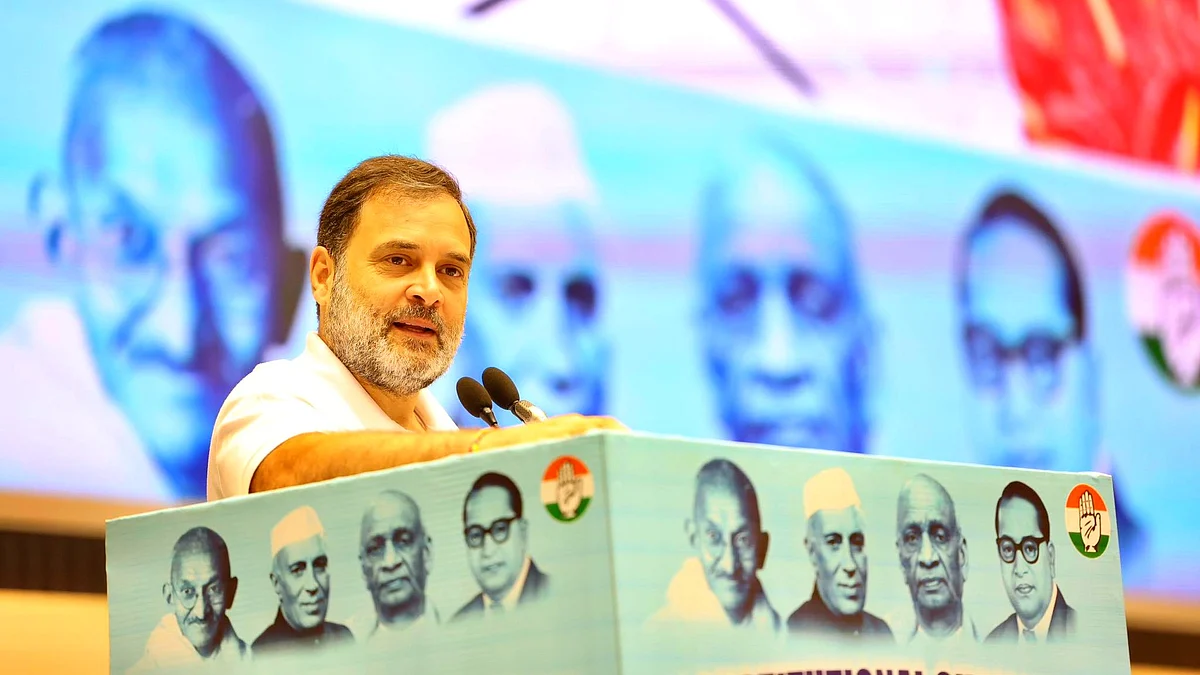Chinese intrusion into Indian territory: what we actually know
Delving deeper into a Supreme Court judge's observation on Rahul Gandhi's questioning of Chinese occupation of Indian land

While the observation by a Supreme Court judge that Congress MP Rahul Gandhi ‘would not say all these things’ (about Chinese incursion into Indian territory) if he were a 'true Indian' has upset jurists as well as Opposition leaders, the BJP and mainstream media predictably went to town while reporting that the Leader of the Opposition in the Lok Sabha had been rebuked by the court.
While Chinese occupation of Indian territory is not hearsay, first, let us set the context of the judge’s observation and the trigger for defamation proceedings against the LOP, stayed on Monday by the Supreme Court.
In an unusual step, Gandhi's counsel and fellow Congress leader Abhishek Singhvi reacted with the following post on X: “…Supreme Court forms prima facie opinion in favour of Rahul Gandhi and issues notice in defamation case. Complainant represented by senior counsel objects. Notice still issued. If you read social media & BJP trolls or Mr Malviya (BJP IT cell chief Amit Malviya) it sounds like RG lost today!...
"RG gets stay of proceedings despite opposition by senior counsel from complainant. Again, trolls suggest ignominious defeat! These people quote & gloat (over) oral observations of the #SC, always made to elicit responses from each side in every case to falsely suggest damnation…”.
Defamation proceedings in a Lucknow court were triggered by a comment Gandhi made in December 2022 at a press conference in Jaipur during the Bharat Jodo Yatra. At the conclusion of the press conference, Gandhi joked that he had won the bet that no question would be asked on Chinese intrusion and occupation of Indian territories.
He went on to say that even the media appeared oblivious to the illegal occupation of 2,000 sq. km of Indian territory despite Chinese aggression against our jawans in Ladakh and Arunachal Pradesh. On both X and TV news channels, the comment was amplified, provoking the defamation case.
While Prime Minister Narendra Modi and other government spokespersons have been vague about the occupation, with the PM saying there was no intrusion into Indian territory at all, the intrusion that led to the 2020 clash in Ladakh's Galwan Valley indicated otherwise. What added to the misgivings was the government’s refusal to brief Parliament, allow a discussion or allow media access to the forward areas.
Following the 2017 Doklam disengagement in Sikkim, too, China had doubled down on its presence on the plateau and asserted its claim over the territory.
So what is in the public domain about the Chinese intrusion of 2020 and later in Ladakh or in Arunachal Pradesh?
· In October 2022, India protested against China constructing a bridge on Pangong Tso (lake). While China claimed the construction was 'peaceful', India pointed out that it was not lawful as Chinese occupation was disputed. This was widely reported in the media.
· A research paper submitted at the annual police meet in January 2023 claimed that India lost access to 26 of 65 patrolling points (PP) in eastern Ladakh. The Indian Army restricts the movement of the district administration and locals in these forward areas, which were once accessible to Indians, into informal “buffer” zones, the research paper by a senior officer said.
The paper added that China having placed high-resolution cameras at vantage points, the Army was restricting the movement of grazers by installing check-posts and deploying plainclothes personnel. The paper also recorded loss of pasture lands at Gogra hills, the north bank of Pangong Tso, and Kakjung areas.
· On 22 October 2024, China confirmed that it had reached an agreement with India to resolve its four-year military standoff following a similar announcement by Indian foreign secretary Vikram Misri the previous day.
· A report in The Hindu in September 2020 had this to say: “About 1,000 square kilometres of area in Ladakh along the Line of Actual Control (LAC) is now under Chinese control, intelligence inputs provided to the Centre suggest. A senior government official told The Hindu that from Depsang Plains to Chushul there had been a systematic mobilisation by the Chinese troops along the undefined LAC."
· In March 2024, around 10,000 people from Ladakh planned to march to the border to showcase how much land had been lost to the neighbouring country, climate activist and educationist Sonam Wangchuk announced. “We know from the shepherds that they are not allowed [anymore] to go to the places that they always used to go. In particular areas, they are stopped kilometres before where they used to go earlier. We will go and show whether land has been lost or not,” he said. That march was disallowed by the administration.
Foreign intelligence reports quoted by Western think tanks and international media also pointed to satellite imagery to show increased Chinese occupation of Indian territory after the Galwan clash. The fact that since then, several rounds of border talks have taken place involving commanders on the ground in Ladakh, also indicates the loss of some Indian territory.
What the LOP has been demanding on behalf of the Opposition is a thorough discussion on the claims and counter claims in Parliament. The government’s stubborn refusal to allow such a discussion is what the LOP has repeatedly highlighted.
Follow us on: Facebook, Twitter, Google News, Instagram
Join our official telegram channel (@nationalherald) and stay updated with the latest headlines
